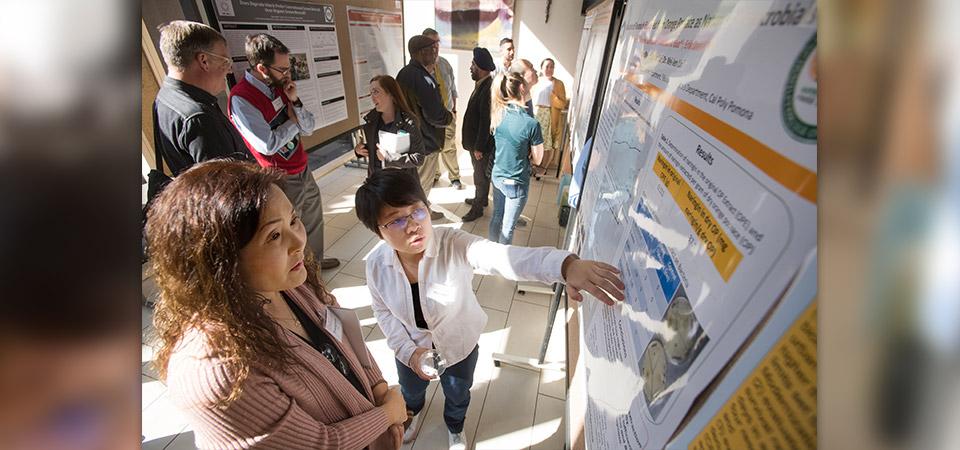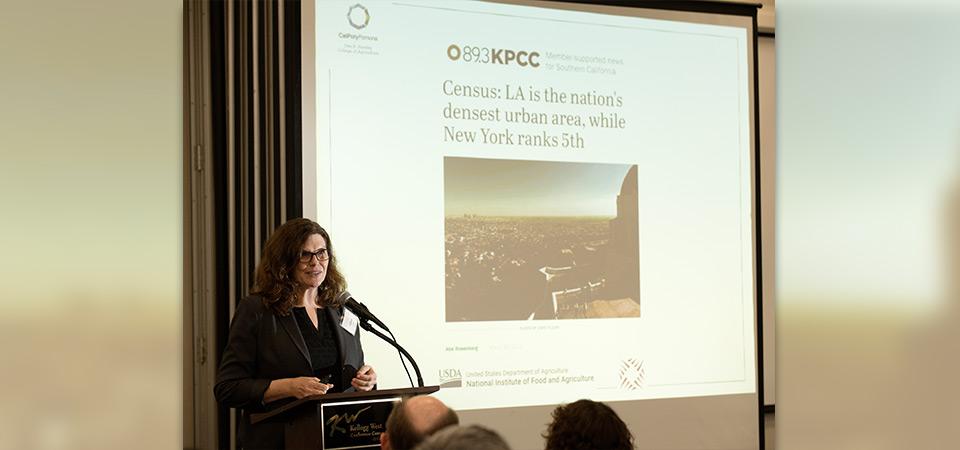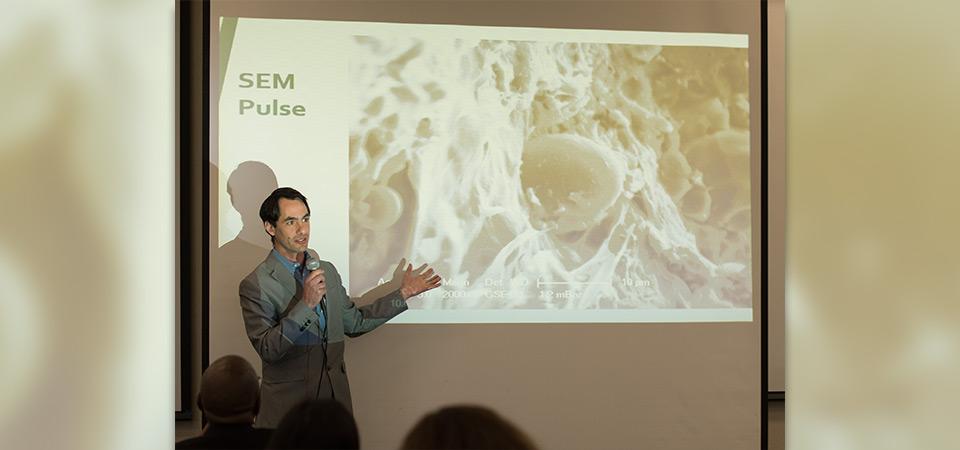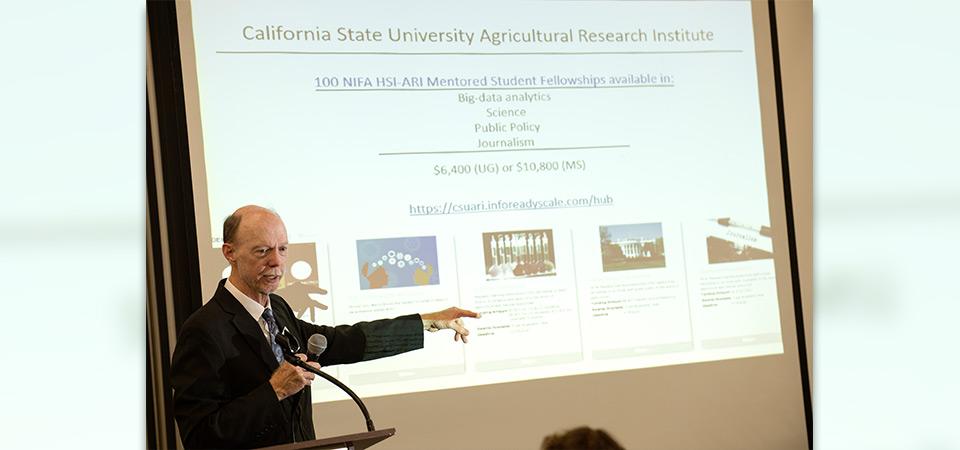Faculty, Students Present Research Findings at ARI Showcase
Slideshow
This slideshow contains 5 slides that will change every 8 seconds. The first button is to play and pause the slideshow, followed by buttons to go to the previous slide, next slide, or choose individual slides.
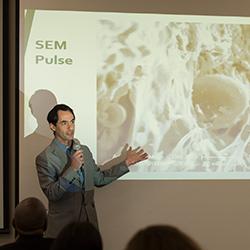
Creating a high-protein pasta that consumers with celiac disease can eat.
Reducing food waste by turning orange pomace into a nutritious food additive.
Experimenting with different feeding times for cattle to see if they are more efficient and save farmers money.
These were just some of the research projects explored at the 18th Annual Cal Poly Pomona Agricultural Research Institute Showcase on Friday, Feb. 7. The event was held at the Kellogg West Conference Center on campus.
Cal Poly Pomona faculty, staff and students made poster and oral presentations at the showcase on research projects the dealt with issues facing the California agricultural industry.
Gabriel Davidov-Pardo, an assistant professor in nutrition and food science, worked on the pasta project with one of his students, Viral Shukla, and Associate Professor Olive Li.
Although pasta is a staple food that is made of wheat, at least one out of every 141 Americans have celiac disease – meaning they cannot eat pasta – and half of those may not have been diagnosed yet, Davidov-Pardo said. In addition, six out of 10 U.S. consumers want to increase protein in their diets, he said.
The team experimented with making lasagna-type pasta out of different formulations of legumes, like fava beans and peas, which have protein. Using legumes also have some additional environmental benefits.
“They are more sustainable. They use less water and they fix nitrogen in the soil,” Davidov-Pardo said.
The high-protein, gluten-free, legume-based pasta was feasible to produce, however it didn’t pass muster in consumer tests because of taste and texture, so researchers will have to continue with different formulations that increase the acceptability of a high-protein, gluten-free pasta, he said.
Li made a presentation on using orange pomace as a possible nutritional additive in food. Although oranges are one of the most valuable cash crops in California, orange juice production results in more than 200,000 tons of leftover byproducts – seeds, peel, pulp – also known as pomace.
If researchers could find a use for the pomace, it would reduce the amount of waste disposed in landfills, Li said. Fortunately, the pomace contains nutrients – including polyphenols and dietary fiber – that could be used in food applications.
Researchers took pomace from the Cal Poly Pomona Farm Store orange juicing operation, dried it, and ground it into a powder. The drying process was successful in killing most microorganisms, and the effort produced a powder that could be used in pasta, meatballs, and gummy candies.
However, the polyphenols made the powder bitter, which would require further work, Li said.
In addition to the Huntley College of Agriculture, faculty from the colleges of engineering and science were involved in some of the projects.
They included Juanita Jellyman, an assistant professor of biological sciences, who explored restricting cattle feeding times to optimize efficiency; and Aerospace Engineering Professor Subodh Bhandari, who is researching the effectiveness of drones in determining plant nitrogen and water stresses.
View the complete list of the oral presentation projects.
All the projects were funded by the California State University Agricultural Research Institute (ARI), which counts six CSU campuses as members or associates. The ARI supports research projects that explore and devise practical solutions to the challenges facing California agriculture.
Nearly all the projects had at least one student working on them, said Professor David Still, CSU ARI’s executive director. Last year, ARI funding accounted for 51,000 hours of paid research by students, who gained training, faculty mentoring, and critical thinking skills, he said.
Across the participating campuses, ARI has five times more students volunteering to help faculty than there are paid internships and needs more research funding, Still said.
ARI recently got a grant that will provide 100 fellowships for students interested in working on big data analytics, public policy, science, and journalism connected with agriculture, Still said.
The fellowships range from $6,400 per year for undergraduate students to $10,800 for graduate students, he said. Students can apply at https://ari.calstate.edu, but must have a project and mentor lined up.

